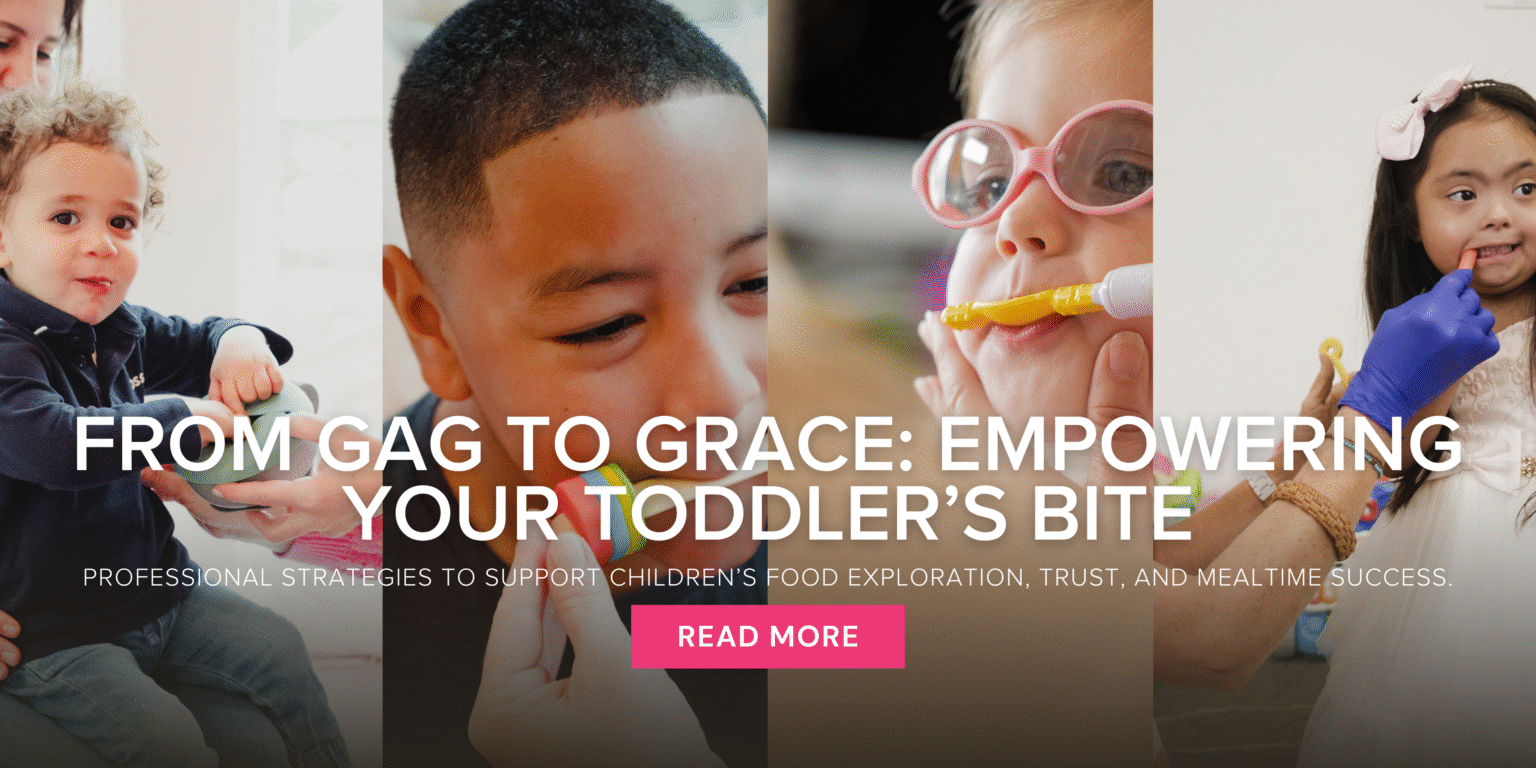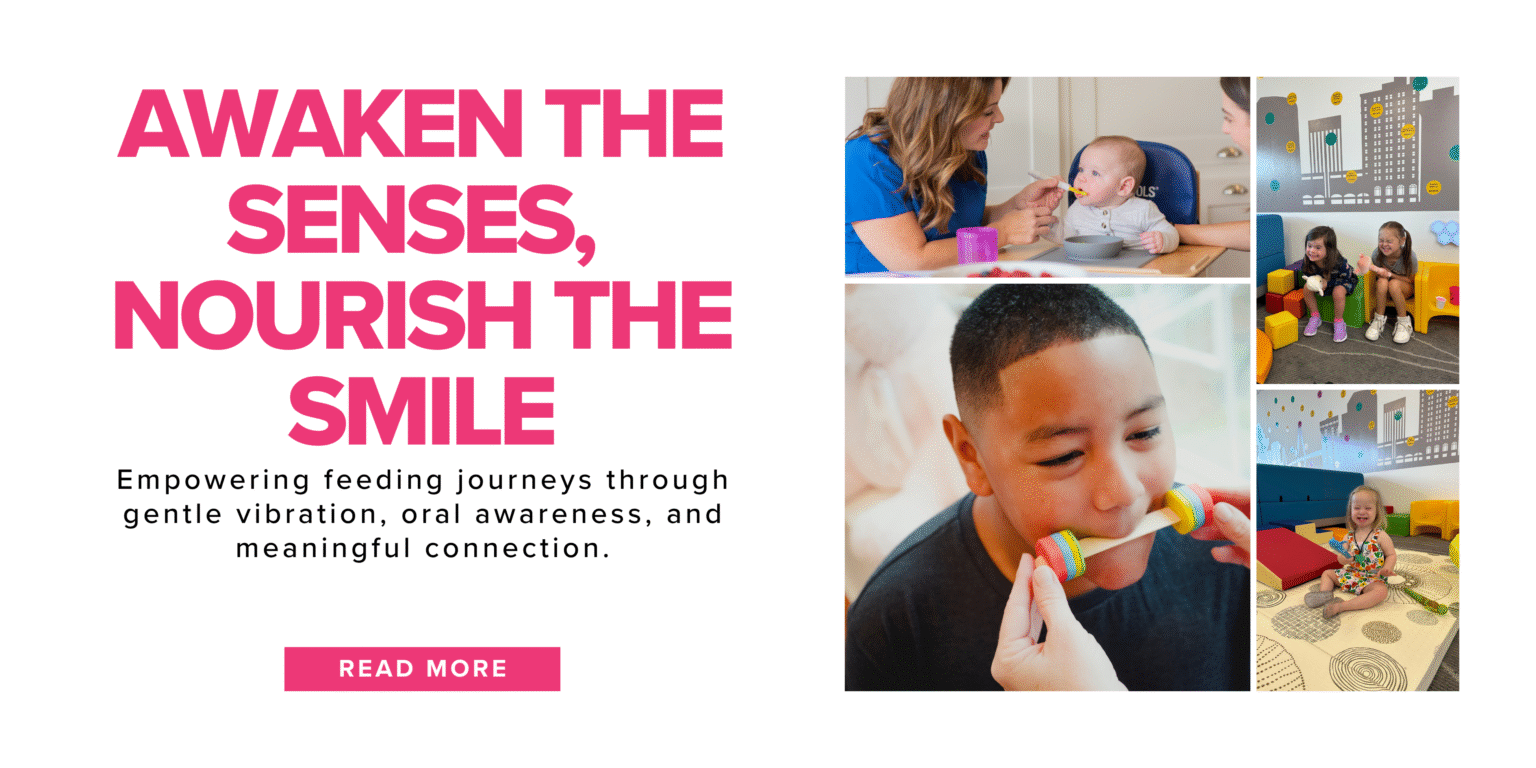This is a repost from Ages and Stages Blog, owned by Diane Bahr, MS, CCC-SLP, CIMI.
As reported by Robyn Merkel-Walsh MA, CCC-SLP in New Jersey, USA
August 2016
The ASHA Connect conference was held in Minneapolis, MN July 8th-10th, 2016. This conference was a new concept bringing together school, private practice, and healthcare speech-language pathologists (SLPs). SLPs from across North America and Puerto Rico joined together in this process. They could select a track/area of interest, or choose various classes from either track. As a speech-language pathologist who works both in the schools and in private practice, this was a perfect combination of choices for me. Course selections ranged from service delivery models to school law. The exhibit hall included products and literature across the lifespan for a variety of disorders. Being an oral sensory-motor, placement, and feeding specialist, I am always looking to find what courses will support or negate the work that I do. After all, to be on top of Evidenced Based Practice, one must be willing to listen to challenging opinions and hypotheses.
At this conference, I presented a poster looking at “A Modern Look at Van Riper’s Phonetic Placement Approach.” This poster explored 1) traditional versus phonological therapy, 2) the sensory-motor system as it relates to speech, 3) the importance of tactile and proprioception in articulation therapy, and 4) shaping placement of the articulators to improve speech clarity. Therapists were very interested in the visual aspects of this poster which showed historical tactile therapy tools such as feathers and matchbooks, versus modern day therapy tools such as TalkTools Bite Blocks and therapeutic straws.
In the poster session, participants learned about two widely-used models of articulation therapy, that is the traditional and phonological models (Bowen, 2005). While some studies suggest the phonological model may have more positive results than the traditional model (Klein, 1996), Van Riper’s Phonetic Placement Approach may be more useful for individuals who are not able to achieve adequate articulatory placement (Van Riper, 1978) using a phonological approach.
Placement cues are based on traditional therapy models which often rely on the concept that an individual can copy a motor plan suggested by a therapist, such as “place your tongue tip to the spot.” Therapists, however, often struggle with a population of individuals who do not respond well to “look at me and say what I say,” and those individuals often require a tactile-kinesthetic approach to treatment (Bahr & Rosenfeld-Johnson, 2010.) Individuals with dysarthria, dyspraxia (called Childhood Apraxia of Speech in the United States), and/or myofunctional disorders may make slow progress, or no progress at all, without the assistance of tactile-proprioceptive cues. Even though therapists have heard the debate about oral sensory-motor therapy (Bowen, 2005; Lof, 2006, 2007, 2009), clinicians are still widely using phonetic placement and oral placement techniques because they yield positive treatment outcomes (Bahr, 2008).
Clinicians on the Board of Directors for the Oral Motor Institute have struggled with articles equating “oral motor therapy” with what some have called “Non Speech Oral Motor Exercises” (NSOME) seemingly coined by Gregory Lof (Lof, 2009). The term “Oral Placement Disorders” (OPD) was coined by Diane Bahr and Sara Rosenfeld-Johnson in 2010 (Bahr & Rosenfeld-Johnson, 2010). Children with OPD cannot imitate targeted speech sounds using auditory and visual stimuli (i.e., “Look, listen, and say what I say”). They also cannot follow specific instructions to produce targeted speech sounds (e.g., “Put your lips together, and say m”). Although the term OPD is new, the concepts surrounding the term have been discussed by a number of authors and clinicians (Bahr, 2001; DeThorne, Johnson, Walder, & Mahurin-Smith, 2009; Hammer, 2007; Hayden, 2004, 2006; Kaufman, 2005; Marshalla, 2004; Meek, 1994; Ridley, 2008; Rosenfeld-Johnson, 1999, 2009; Strand, Stoeckel, & Baas, 2006).
There has been question and ongoing confusion regarding the definition of NSOME versus the definition of oral placement techniques (Bahr & Rosenfeld-Johnson 2010). Oral Placement Therapy (OPT) is a tactile teaching technique used for children and adults with Oral Placement Disorders (e.g., dysarthria) who cannot learn standard speech sound production using auditory and visual teaching methods alone. OPT facilitates the pre-requisite skills in muscle control to develop dissociation and grading in the muscles of the abdomen, velum, jaw, lips, and tongue for clients who cannot approximate standard speech sounds using instructions. If the client can produce standard speech with adequate oral placement and sound duration using auditory and visual cueing only, OPT would not be included in that client’s program plan.
OPT is a modern extension of Phonetic Placement Therapy (Van Riper, 1954) and The Feedback Model (Mysak, 1971). It is based on a very common sequence (Bahr 2001; Green, Moore, & Reilly, 2000; Hayden 2004; Marshalla 2007; Young and Hawk 1955):
- Facilitate speech movement with the assistance of a therapy tool (e.g., horn, tongue depressor) or a tactile-kinesthetic facilitation technique (e.g., PROMPT oral cue)
- Facilitate speech movement without the therapy tool and/or tactile-kinesthetic technique (cue fading)
- Immediately transition the movement into speech with and without therapy tools and/or tactile-kinesthetic techniques
Lof has stated that the methods used in Van Riper’s Phonetic Placement Approach are not in fact considered NSOME (Lof, 2009). This is why it is important to explore current clinical techniques to determine which activities are considered unrelated to speech production, as opposed to those activities that, in fact, are an extension of Phonetic Placement Therapy (Marshalla, 2007).
Many therapists commented that they use these tools in treatment and feel they work. Others commented that they do not use the tools because they were told by colleagues that “non-speech oral motor exercises (NSOME)” were not evidenced based. I was able to discuss this debate and define the difference between NSOME and OPT. This debate is thoroughly discussed in a prior blog I wrote with Diane Bahr and in many monographs found on the Oral Motor Institute website.
With podcasts (e.g., this one), ASHA presentations (e.g., this one), and the efforts of the Oral Motor Institute, there is certainly some progress being made in defining effective versus ineffective oral sensory-motor treatment. Therapists at the conference were not aware of the many resources available on this topic, so the Poster Session served its purpose in educating therapists on the most recent information.
Another course at the same conference entitled Back in Time: Revisiting Motor-Based Treatment for Speech Sound Disorders by Sherry Sancibrian, MS, CCC-SLP, BCS-CL also discussed Van Riper and Phonetic Placement. Sherry brought attention to the “old” methods of pre-practice and placement (i.e., targets in sounds, syllables, etc.), versus the new methods of concurrent treatment in which the therapist targets random levels of difficulty rather than follow the traditional hierarchy of sounds, syllables, words, etc. According to Sherry, therapists are still using tactile-kinesthetic cues such as dental flossers, craft sticks, and straws to help elicit correct placement for target sounds.
The exhibit hall was also an indication that therapists are using tactile-proprioceptive cues in therapy. Sandra Holtzman and Karen Masters were busy at the Orofacial Myology table helping therapists learn to measure lingual range of motion and use of tactile-proprioceptive cues in Orofacial Myofunctional therapy. Lori Overland and I were assisting therapists at the TalkTools table and gave a seminar on Self-Limited Diets in Children on the Autism Spectrum. Artic-Bites highlighted the Bite-R device which is patented and FDA approved. Overall it was a successful and wonderful conference!
About the Author
 Robyn Merkel-Walsh, MA, CCC-SLP has specialized for over 22 years in feeding, oral placement, and myofunctional disorders in children. She is employed by the Ridgefield Board of Education, runs a private practice in Ridgefield, NJ, is the board chair of the Oral Motor Institute, serves on the NJSHA Board of Directors, and is a member of the TalkTools® Speakers Bureau. She teaches OPT, Autism, and Tongue Thrust classes that have been offered for ASHA CEUs and has been invited to speak on Oral Placement Disorders by Conversations in Speech Pathology, Bergen County Region V, the International Association of Orofacial Myology, The Apraxia Network, AAPPSPA, and the MOSAIC Foundation. Robyn has received specialized training in Oral Placement Disorders, feeding, apraxia, Applied Behavioral Analysis, autism, cranio-facial anomalies, Beckman Techniques, and PROMPT.
Robyn Merkel-Walsh, MA, CCC-SLP has specialized for over 22 years in feeding, oral placement, and myofunctional disorders in children. She is employed by the Ridgefield Board of Education, runs a private practice in Ridgefield, NJ, is the board chair of the Oral Motor Institute, serves on the NJSHA Board of Directors, and is a member of the TalkTools® Speakers Bureau. She teaches OPT, Autism, and Tongue Thrust classes that have been offered for ASHA CEUs and has been invited to speak on Oral Placement Disorders by Conversations in Speech Pathology, Bergen County Region V, the International Association of Orofacial Myology, The Apraxia Network, AAPPSPA, and the MOSAIC Foundation. Robyn has received specialized training in Oral Placement Disorders, feeding, apraxia, Applied Behavioral Analysis, autism, cranio-facial anomalies, Beckman Techniques, and PROMPT.
Meet her! Oct. 15, 2016 in Cape Coral, FL | Nov. 6, 2016 in Queens, NY | Nov. 12, 2016 in San Juan, PR
About the Blog Owner
 Diane Bahr, MS, CCC-SLP, CIMI is a certified Speech-Language Pathologist and infant massage instructor. She has practiced Speech-Language Pathology since 1980 and has been a feeding therapist since 1983. Her experiences include teaching Graduate, Undergraduate, and Continuing Education courses; working with children and adults who exhibit a variety of speech, language, feeding, and swallowing disorders; and publishing/presenting information on oral sensory-motor function, assessment and treatment. She is the author of the textbook Oral Motor Assessment and Treatment: Ages and Stages (Allyn & Bacon, 2001). She has also written a book for parents entitled Nobody Ever Told Me (Or My Mother) That! Everything from Bottles and Breathing to Healthy Speech Development (Sensory World, 2010). Diane maintains a private practice, writes articles appearing in a variety of publications, is interviewed frequently on radio and in magazines, and is an international presenter.
Diane Bahr, MS, CCC-SLP, CIMI is a certified Speech-Language Pathologist and infant massage instructor. She has practiced Speech-Language Pathology since 1980 and has been a feeding therapist since 1983. Her experiences include teaching Graduate, Undergraduate, and Continuing Education courses; working with children and adults who exhibit a variety of speech, language, feeding, and swallowing disorders; and publishing/presenting information on oral sensory-motor function, assessment and treatment. She is the author of the textbook Oral Motor Assessment and Treatment: Ages and Stages (Allyn & Bacon, 2001). She has also written a book for parents entitled Nobody Ever Told Me (Or My Mother) That! Everything from Bottles and Breathing to Healthy Speech Development (Sensory World, 2010). Diane maintains a private practice, writes articles appearing in a variety of publications, is interviewed frequently on radio and in magazines, and is an international presenter.
Meet her! Dec. 8-10 in New York, NY
For a copy of the poster A Modern Look at Van Riper’s Phonetic Placement Approach, please click here.
References:
Bahr, D. (2008). The oral motor debate: Where do we go from here? Poster session presented at the annual meeting of the American Speech-Language-Hearing Association, Chicago, IL.
Bahr, D. C. (2001). Oral motor assessment and treatment: Ages and stages. Boston: Allyn and Bacon.
Bahr, D., & Rosenfeld-Johnson, S. (2010, May). Treatment of children with speech oral placement disorders (OPDs): A paradigm emerges.Communication Disorders Quarterly, 31(3), 131-138.
Bowen, C. (2005). What is the evidence for oral motor therapy? Acquiring Knowledge in Speech, Language and Hearing, 7(3), 144-147.
DeThorne, L. S., Johnson, C. J., Walder, L., & Mahurin-Smith, J. (2009). When “Simon Says” doesn’t work: Alternatives to imitation for facilitating early speech development. American Journal of Speech-Language Pathology, 18, 133-145.
Green. R., Moore, C. A., & Reilly, K.J. (2000). The sequential development of jaw and lip control for speech. Journal of Speech, Language and Hearing Research, 45, 66-79.
Hammer, D. W. (2007). Childhood apraxia of speech: New perspectives on assessment and treatment [Workshop]. Las Vegas, NV: The Childhood Apraxia of Speech Association.
Hayden, D. A. (2004). PROMPT: A tactually grounded treatment approach to speech production disorders. In I. Stockman (Ed.), Movement and action in learning and development: Clinical implications for pervasive developmental disorders (pp. 255-297). San Diego, CA: Elsevier-Academic Press.
Hayden, D. A. (2006). The PROMPT model: Use and application for children with mixed phonological-motor impairment. Advances in Speech-Language Pathology, 8(3), 265-281.
Hodge, M. M. (2002). Non-speech oral motor treatment approaches for dysarthria: Perspectives on controversial clinical practices. Perspectives in Neurophysiology and Neurogenic Speech Disorders, 12(4), 22-28.
Kaufman, N. R. (2005). The Kaufman speech praxis workout book: Treatment materials & a home program for childhood apraxia of speech. Gaylord, MI: National Rehabilitation Services.
Klein, E. S. (1996.) Phonological/traditional approaches to articulation therapy. Language, Speech, and Hearing Services in Schools, 27, 314-323.
Lof, G.L. (2009). Nonspeech oral motor exercises: An update on the controversy. Presentation at ASHA Annual Convention, New Orleans, LA.
Lof, G.L. (2007). Reasons why non-speech oral motor exercises should not be used for speech sound disorders. Presentation at the ASHA Annual Convention, Boston, MA.
Lof, G.L. (2006). Logic, theory and evidence against the use of non-speech oral-motor exercises to change speech sound productions. Presentation at the ASHA Annual Convention, Miami, FL.
Marshalla, P. (2007). Oral Motor Techniques Are Not New. Oral Motor Institute, 1(1).
Marshalla, P. (2004). Oral-motor techniques in articulation & phonological therapy. Mill Creek, WA: Marshalla Speech and Language.
Meek, M. M. (1994). Motokinesthetic approach [Video Series]. Albuquerque, NM: Clinician’s View.
Mysak, E. (1971). Speech pathology and feedback therapy. Charles C. Thompson Publisher.
Ridley, D. (2008). Treatment of speech production disorders and problem phonemes: Getting to carryover [Workshop]. Saint Louis, MO: Ages and Stages, LLC.
Rosenfeld-Johnson, S. (2009). Oral placement therapy for speech clarity and feeding (rev. 4th ed.). Tucson, AZ: Innovative Therapists International.
Rosenfeld-Johnson, S. (1999). Oral-motor exercises for speech clarity. Tucson, AZ: Innovative Therapists International
Sancibrian, S. (2016). Back in time: Revisiting motor-based treatment for speech sound disorders.Presentation at ASHA Connect Conference, Minneapolis, MN.
Strand, E., Stoeckel, R., & Baas, B. (2006). Treatment of severe childhood apraxia of speech: A treatment efficacy study. Journal of Medical Speech Pathology, 14, 297-307.
Van Riper, C. (1978, 1954, 1947) Speech Correction: Principles and Methods. Englewood Cliffs: Prentice-Hall.
Young, E. H., & Hawk, S. S. (1955). Moto-kinesthetic speech training. Stanford, CA: Stanford University Press.



